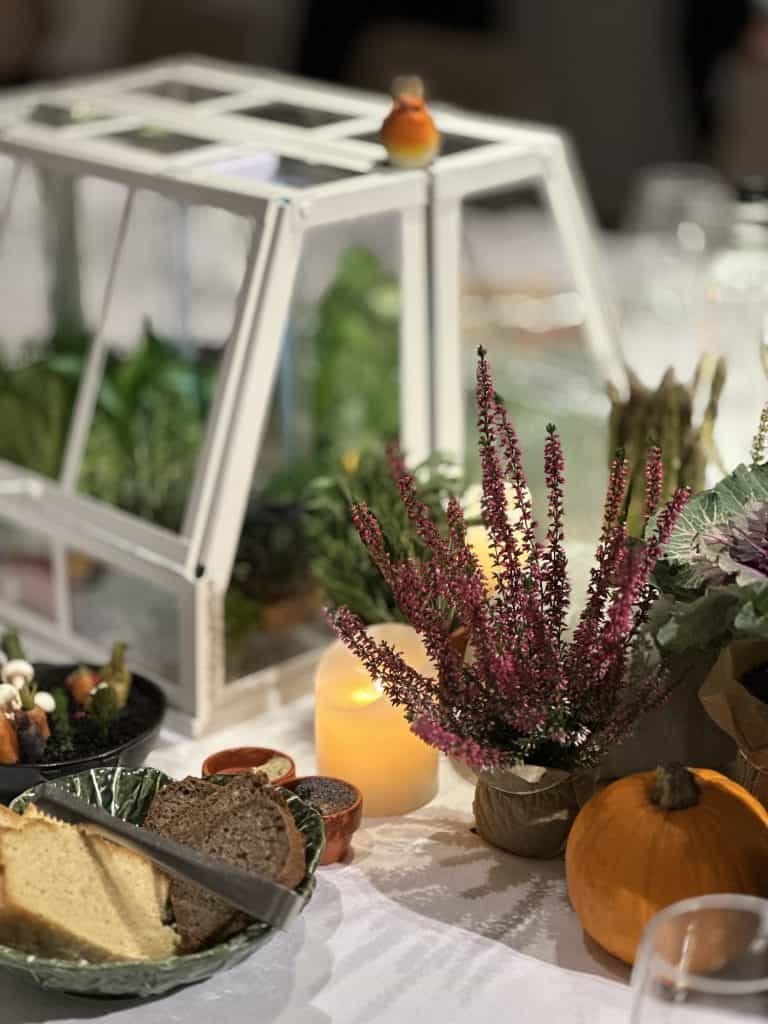

As the evenings draw in and the social calendar fills with autumn gatherings, dinner parties offer the perfect opportunity to bring friends and family together. However, traditional entertaining often generates considerable waste through excessive packaging, food disposal, and single-use decorations. The good news is that hosting sustainably requires only thoughtful planning and a few strategic changes to create an evening that delights your guests whilst respecting the environment.
Sustainable Eating: Choosing Seasonal and Local Ingredients
The foundation of any sustainable dinner party begins with your ingredient choices. Selecting seasonal, locally sourced produce significantly reduces your carbon footprint, without long-distance transport and supports local farmers.

Farmers’ markets provide excellent access to fresh, seasonal ingredients at their best. Many areas still have milkmen, and their daily milk delivery services now offer organic dairy in reusable glass bottles. This reduces packaging waste whilst guaranteeing ingredient freshness.
When planning your menu, find out what produce is currently in season. Autumn is the time to add more root vegetables, squashes, apples, and pears to your menu. In winter, add brassicas, citrus fruits, and hearty greens. Building your menu around these ingredients will ensure optimum taste.
Consider the environmental impact of your main protein as well. Plant-based dishes, sustainable seafood and locally raised meat options all reduce the carbon intensity of your menu.
Sustainable Dinner Party Decorations: Natural and Reusable Options

Creating an attractive table setting need not involve disposable plastics or synthetic decorations. Natural, biodegradable, and reusable options like pumpkins, leaves, and pine cones look natural and eco-friendly for tablescaping.
Dried flowers, potted herbs and seasonal foliage create beautiful centrepieces that can be composted after. Charity shops, car boot sales and vintage markets are great places to find mismatched crockery, glassware and linens that add a touch of whimsy to your table.
For bigger dinner parties where disposables become necessary, choose compostable napkins and wooden cutlery rather than plastic alternatives. Lighting sets the atmosphere for any gathering. Solar-powered fairy lights provide ambient lighting indoors and outdoors without increasing electricity consumption, and beeswax or soy candles are a natural alternative to petroleum-based options indoors.
Invest in quality cloth napkins and tablecloths that can be washed and reused. They are much more grown-up than paper napkins.
Zero-Waste Menu Planning: Reducing Food Waste at Dinner Parties
Food waste is one of the biggest issues in home entertaining. Careful planning can prevent overbuying whilst ensuring guests leave satisfied.
Calculate portions realistically based on your guest count. A typical dinner party serving consists of approximately 150-200g of protein, 150g of carbohydrates, and 100g of vegetables per person, with adjustments for appetites.
Design your menu around dishes that use whole ingredients. Vegetable peelings can become stock, herb stems can flavour sauces, and stale bread can be turned into croutons or breadcrumbs.
Prepare dishes that store and reheat well, so you can have leftovers for another meal. Soups, stews, grain salads, and roasted vegetables all taste better the next day.
Buy dry goods, grains, and pulses from bulk bins using reusable containers. Buy loose vegetables instead of plastic-wrapped ones. This reduces packaging waste and allows precise quantity control.
Sustainable Entertaining Tips: Practical Implementation Strategies
Beyond food and decoration, here are some practices to enhance the sustainability of your dinner party.
Use real crockery, glassware, and cutlery rather than disposables. The environmental cost of washing dishes is significantly lower than producing and disposing of single-use alternatives. To reduce the environmental impact, use food waste, compost bins and recycle bins.
Eco-Friendly Hosting: Inspiring Sustainable Choices
You can share your sustainable lifestyle choices with your guests to encourage more people to live sustainably. Demonstrating this during the dinner party will show your guests how easy it is to make small shifts that help the environment without compromising on your food and hosting style.
The Balance of Sustainable Dinner Party Hosting
Creating a sustainable dinner party requires balancing environmental responsibility with the warmth and generosity that define gracious hosting. Each sustainable choice, however small, contributes positively to environmental protection whilst demonstrating that conscious living enhances rather than restricts life’s pleasures.
Will you change how you host dinner parties? Do you have any other sustainable hosting tips to share?



